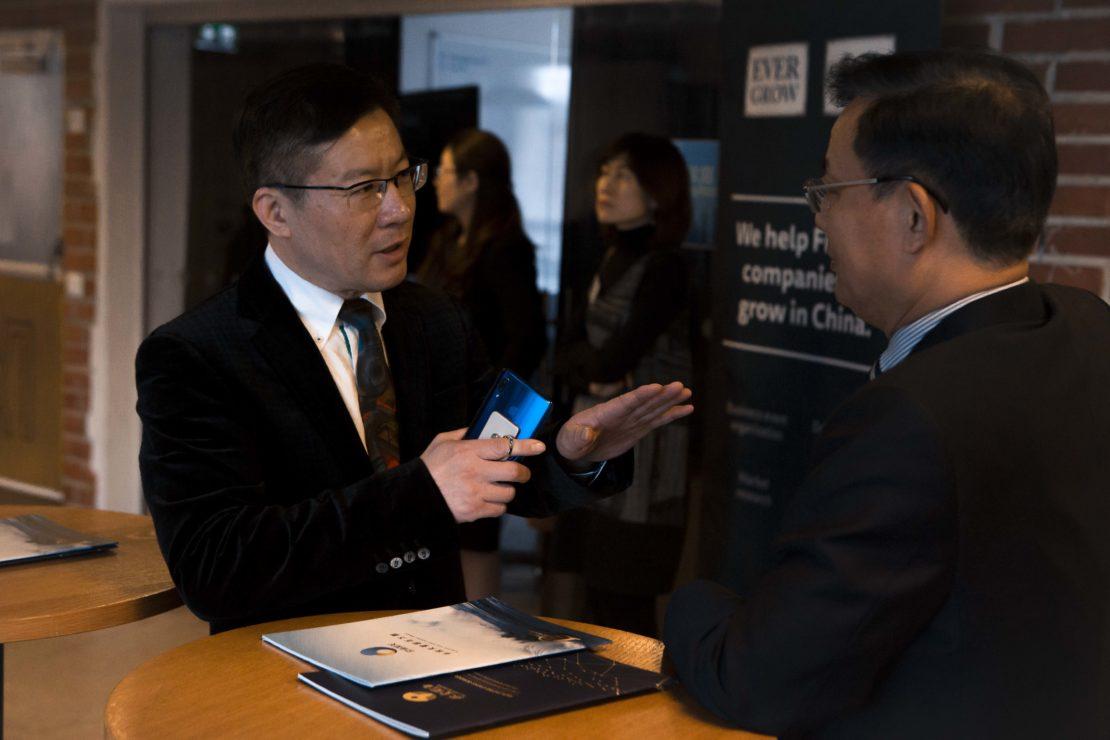9May2019
The China-Finland Economic and Trade forum was hosted by China-Europe Association for Technical& Economic Cooperation in Helsinki. There were experts from China, in areas of customs clearance, logistics, sales channels, IP law and protection, sharing their expertise and practical advice to Finnish entrepreneurs looking for expanding to China. NBR picked out valuable info and tips to share with our readers and followers.
Mr. He Bin from Shanghai Oujian Network Development Group Co., Ltd. gave an analysis on the trend of European consumer goods entering chinese market and shared with the audience what products are in growing need in China.
The trend in bilateral trade between China and Europe is growing steadily. China-EU bilateral trade volume reached US $13.88 billion in 1988 and it broke through US $ 700 Billion in 2018. At the moment China is the second largest trading partner for EU, while EU has been China’s largest trading partner for 12 consecutive years.
The BRI Policy Communication Committee of European Parliament was established, which drafted a series of co-operation programs between China and Europe on March 26th, 2019.
Therefore the bilateral trade is expected to exceed US$1 trillion in 2019.
China customs import data (The data source released by the China customs as of Sept, 2018) shows that EU is the largest source of imports with 12.8% volume. Top 3 countries include Germany, France and UK. The only Nordic country included in the top 10 is Sweden.
Consumer demand keeps growing
Chinese consumer demand keeps growing steadily. Chinese total retail sales of consumer good reached 38 trillion RMB in 2018 with the increase of 9% from the previous year. According to Mr. Bin retail sales in China keep a basic growth rate at around 10%. – According to the survey of Chinese Consumer Confidence, the Chinese consumers are willing to invest and pay more for food and drinks, personal electronics, home appliances and cosmetics.
Understand the tiers
Mr. Joshua Wu from Silk Passage Business Consultancy reminded that before entering the chinese market you should understand the tier structure. – The Chinese city tier system is a hierarchical classification of Chinese cities. It means Chinese market is divided into tiers which means you can apply your product into tiers, not China as a whole. According to Mr. Wen a practical tip is to look into tiers 2 and onwards. – Although the salary level is lower on those areas, the consumer need is higher.
He also said that imported goods consuming is becoming an overall trend in China. – People are willing to pay more in order to be able to consume quality products imported from e.g. EU area and as we see it, there will be a booming trend for beauty, fashion, household, baby and pet products all over China. But keep in mind that Chinese consumers are not willing to consume just any imported product as they are looking more and more into quality. That means you cannot expect to make a success in China unless your product meets the quality requirements.
Developed Markets (Tier 1 and 1.5)
- Densely populated
- Higher salaries
- Consumption mentality more advanced
- Less resistance against new things
- Great demand for imported goods
- Direct influence of favorable policies (CIIE)
- Favorable to brands and qualitative products (organic)
Developing Markets (Tiers 2,3…)
- Less densely populated
- Lower salaries
- High consumption needs
- High consumption power
- Decreasing resistance to new things
- Great demand for foreign brands
- Favorable to niche products and brands
Practical Tip!
If you are planning to enter the Chinese market or in need for assictance or co-operation, check out chinaeuropebiz.com
Did you know that China has introduced a tariff adjustment program for 2019 which benefits the chinese consumers and global merchants? This is what it means in nutshell:
- The provisional import tax rate of 706 items was be implemented from January 1, 2019
- The tariff on imports of consumer goods for daily use, for which 1,449 items are taxed, accounted for 70 percent of the total, with an average reduction of 9%
- The temporary tariff rate on the import of 14 information technology products will be abolished
- The average tariff rate on imports of clothing, shoes, hats, kitchens and sporting goods was cut from 15.9% to 1%
- The average import tariff rate on household appliances such as washing machines and refrigerators was cut to 8%from 20.5%
- The average import tariff rate on processed food, such as aquaculture, fishing aquatic products and mineral water, was cut from 15.2% to 9%
- The average import tariff on washing products, cosmetics such as skin care and hairdressing and some pharmaceutical and health products was cut to 9% from 8.4 %
Source: General Admission of Customs December 22nd, 2018 Tax Commissions [2018] No. 65


